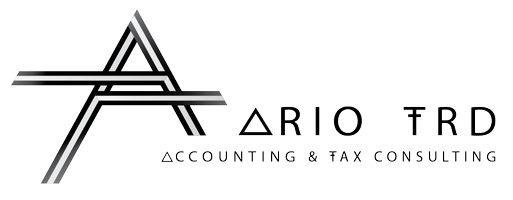Value Added Tax (VAT) in Oman, introduced in April 2021, remains a cornerstone of the Sultanate’s non‑oil revenue strategy. As the global and regional tax environment evolves rapidly, Oman has enacted several amendments and new regulations to ensure clarity, fairness, and compliance. If you’re a business operating in Oman—or planning to register for VAT—it’s critical to understand the latest updates, how they affect you, and what you must do to stay compliant.
What is VAT in Oman?
The standard VAT rate in Oman is 5% on most taxable goods and services. Some goods and services are exempt or zero‑rated under specific conditions. Businesses must register with the Oman Tax Authority (OTA) once their taxable supplies exceed the registration threshold.
Key Recent Changes & Updates (2023–2025)
1. Amendments to VAT Executive Regulations (Decision No. 521/2023)
Decision No. 521/2023 (published 29 October 2023) introduced several clarifications and expanded refund eligibility. Notably, non‑profit charitable organisations can claim refunds on VAT paid for goods and services directly related to their charitable activities. The amendment also clarified refund rules for imported goods intended for re‑export under the Common Customs Law.
2. VAT Refund for Armed and Security Forces (Decision No. 81/2025)
Decision No. 81/2025 extended refund eligibility to certain purchases made by the armed forces and security agencies (e.g., vehicles, spare parts) subject to specific conditions and documentation.
3. E‑Invoicing / The Fawtara Project
Oman is progressing toward mandatory e‑invoicing through the ‘Fawtara’ project. The initiative will introduce electronic invoice standards, pilots and phased enforcement to improve compliance and reduce VAT fraud. Businesses should monitor official OTA guidance and begin planning system upgrades.
4. Increased Audits & Reconciliations
The Oman Tax Authority has increased focus on VAT refund audits and reconciliation checks. Businesses should ensure that VAT returns reconcile with accounting records, import declarations and customs documents to avoid adjustments and penalties.
Compliance Requirements for VAT in Oman
| Area | Requirement | Key Details |
| Registration | Register when taxable supplies exceed threshold | Thresholds are defined by law; voluntary registration is possible for certain entities. |
| Invoicing | Issue tax invoices timely and correctly | Tax invoices must include supplier & customer info, VAT number, date, description, tax base and VAT amount. |
| Record Keeping | Maintain robust records | Keep invoices, books, customs docs and electronic records for the required retention period (typically 10 years). |
| VAT Returns | File returns and pay VAT on time | Returns may be monthly or quarterly depending on taxpayer classification; include input/output VAT, imports and adjustments. |
| Refund Claims | Submit documented refund applications | Refund eligibility expanded for charities and specific entities; maintain evidence of purchases and use. |
| Audits | Be audit‑ready with reconciliations | Reconcile VAT returns with accounting ledgers, import records and bank statements to support refunds and claims. |
E‑Invoicing / Digital Timeline (Overview)
| Phase | Estimated Timing | What to Prepare |
| Specification & Pilot | Late 2025 – 2026 | Review e‑invoice technical specs; assess current accounting/ERP systems. |
| Gradual Rollout | 2026 | Integrate or upgrade invoicing systems; test electronic submission processes. |
| Wider Enforcement | 2027–2028 | Full compliance; ensure archiving and audit trails for e‑invoices. |
Common Pitfalls & Risks to Avoid
- Late, missing or incorrectly formatted tax invoices.
- Misclassifying supplies (taxable / exempt / zero‑rated).
- Failing to account for import VAT or postponed VAT correctly.
- Insufficient documentation to support refund claims.
- Not preparing for e‑invoicing requirements and system changes.
- Underestimating penalties and interest for late filings or errors.
What’s Coming Next? (Looking Ahead)
Expect a wider push to digital compliance (e‑invoicing), expanded enforcement, refined refund rules, and potential sector‑specific guidelines. Businesses should prioritise system upgrades, staff training and strengthened documentation practices.
Frequently Asked Questions (FAQ)
What is the VAT rate in Oman?
The standard VAT rate is 5% for most taxable goods and services. Some items may be zero‑rated or exempt under specific rules.
Who must register for VAT in Oman?
Businesses whose taxable supplies exceed the registration threshold must register with the Oman Tax Authority; some entities can opt for voluntary registration.
When will e‑invoicing become mandatory?
E‑invoicing is being introduced in phases with pilots in 2025–2026 and wider rollout expected through 2027; watch OTA announcements.
Can non‑profit organizations claim VAT refunds?
Yes. Under Decision No. 521/2023, eligible charitable organisations can claim refunds for VAT paid on goods and services directly related to their charitable activities, subject to documentation.
What penalties exist for non‑compliance?
Penalties include fines, audit adjustments, interest on unpaid VAT, and potential suspension of refund eligibility for serious or repeated non‑compliance.
Conclusion
Oman’s VAT landscape is evolving. With updated executive regulations, expanding refund rules and e‑invoicing on the horizon, businesses must stay proactive. Accurate invoicing, robust record‑keeping and system preparedness are essential. ArioTax can help you with VAT compliance, refunds and digital readiness.
Need help with VAT compliance in Oman? Contact ArioTax for expert support




